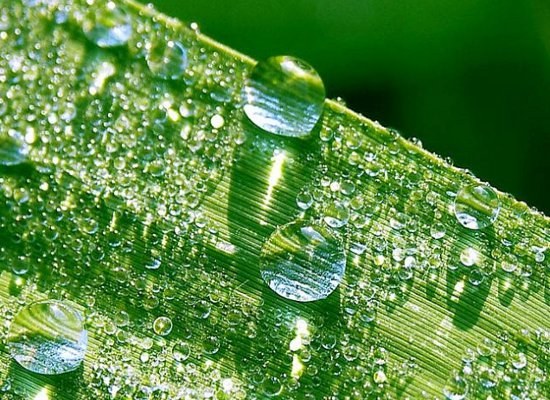The temperature of the medium in which the condensation of the available moisture in the air is called the dew point. It's not constant and it depends on humidity and the actual temperature of the environment. For each value of temperature there is a limit to the amount of moisture that can be held in vapor form. The higher the temperature, the more water can be contained in the form of steam. Anything over this amount, condenseries. When the temperature drops and a constant amount of moisture at some point the air can no longer hold this moisture and over condenseries. This temperature is called the dew point.
When in an environment with one temperature, humidity and dew point enters the material with a temperature below the dew point on the surface of the material of the condensate drops, because the boundary cools the surrounding air.
In winter the outside temperature is much lower than in the room. External wall surface is cooled, and the interior heats up. Inside walls the temperature of the material makes the transition values between external and internal. It is important that the point at which the temperature equals the dew point for the air inside the room was as far away from the inner surface and in the thickness of the homogeneous layer of material of the wall. If it is close to the inner surface or the inner surface of the colder values of the dew point, it will condense moisture, which makes it a problem.
Excess moisture in plaster and on its surface may cause damage to interior finishes and the formation of mold and mildew. Because of the location of the dew point should not be to insulate the wall from inside the premises. Dew point will shift closer to the inner surface, as a consequence, condensation and damp indoors.
Important components of a comfortable microclimate is the air temperature 18-24C and relative humidity of 40-60%. At a relative humidity of 100% of the actual temperature just equals the dew-point value. To raise humidity, use different vaporizers, humidifiers. For lower humidity it is possible to use air, which heat exchanger has a temperature lower than the dew-point value. As a result, the moisture condenseries on the radiator and removed from the premises.
When applying anti-corrosion coatings, it is important that the painted surface was heated to a temperature above the dew point. Otherwise the condensation that forms will prevent the tight fit of anti-corrosion coating.
When in an environment with one temperature, humidity and dew point enters the material with a temperature below the dew point on the surface of the material of the condensate drops, because the boundary cools the surrounding air.
Dew point in the construction
In winter the outside temperature is much lower than in the room. External wall surface is cooled, and the interior heats up. Inside walls the temperature of the material makes the transition values between external and internal. It is important that the point at which the temperature equals the dew point for the air inside the room was as far away from the inner surface and in the thickness of the homogeneous layer of material of the wall. If it is close to the inner surface or the inner surface of the colder values of the dew point, it will condense moisture, which makes it a problem.
Excess moisture in plaster and on its surface may cause damage to interior finishes and the formation of mold and mildew. Because of the location of the dew point should not be to insulate the wall from inside the premises. Dew point will shift closer to the inner surface, as a consequence, condensation and damp indoors.
Dew point and microclimate
Important components of a comfortable microclimate is the air temperature 18-24C and relative humidity of 40-60%. At a relative humidity of 100% of the actual temperature just equals the dew-point value. To raise humidity, use different vaporizers, humidifiers. For lower humidity it is possible to use air, which heat exchanger has a temperature lower than the dew-point value. As a result, the moisture condenseries on the radiator and removed from the premises.
Dew point and corrosion resistant coating
When applying anti-corrosion coatings, it is important that the painted surface was heated to a temperature above the dew point. Otherwise the condensation that forms will prevent the tight fit of anti-corrosion coating.
